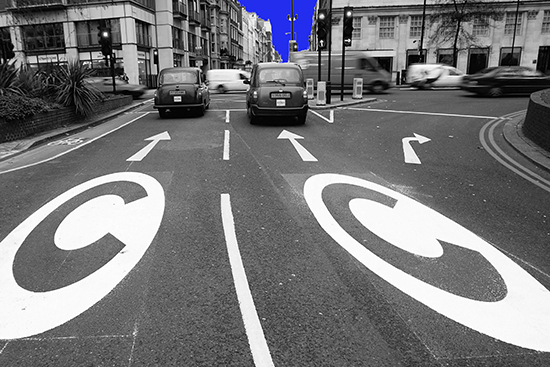征收擁堵費能緩解擁堵嗎?

|
擁堵費是司機在高峰時段進入大流量地區(qū)需要繳納的費用,,這項收費即將在美國落地。作為州財政預算的一部分,,紐約州的立法者已經通過決議,,向進入曼哈頓第61大街以下的機動車輛收取日常費用。這一計劃預計于2021年生效,,所得資金將用于修繕紐約市境況不佳的地鐵線路,。
多年來,倫敦,、斯德哥爾摩、米蘭和部分國際大都市的司機也在繳納類似的費用,。倫敦交通局(Transport for London)的數據顯示,,2003年至今,倫敦市中心的私家車數量已經減少了30%,,而規(guī)定實行的最初三年,,這項費用還導致一氧化二氮排放量減少了17%。不過Uber和Lyft等租賃汽車服務的爆炸式增長削弱了政策的效果,,它們在繼續(xù)給倫敦人制造著擁堵,。
專家指出,紐約的計劃明顯不同,很難預測它的影響,。紐約大學魯丁交通中心(Rudin Center for Transportation)的主任米切爾·L.·莫斯表示:“倫敦這個城市與紐約很不一樣,,紐約的收費區(qū)域比倫敦大得多?!?/p>
費城和洛杉磯也在考慮類似的計劃,,不過莫斯指出,紐約不同于其他美國城市,,因為它有24小時開放的地鐵,,對汽車的依賴性相對較低:“可以在紐約推行計劃的真正原因在于搭乘公共交通工具的人是開車的五倍?!?/p>
不過在將通勤者趕回擁擠的地鐵這個問題上,,如果立法者不迅速升級年久失修的運輸系統(tǒng),紐約市和紐約州恐怕會面臨先有雞還是先有蛋的難題,。(財富中文網)
本文另一版本登載于《財富》雜志2019年6月刊,,標題為《美國堵車的歐洲解決方案》。 譯者:嚴匡正 |
Congestion charges—fees paid by drivers to enter highly trafficked areas in peak times—are coming to America. As part of the state budget, New York lawmakers have approved a daily charge on motor vehicles entering Manhattan below 61st Street. The plan is scheduled to go into effect in 2021, with the proceeds used to fix N.Y.C.’s ailing subway lines.
Drivers in London, Stockholm, Milan, and a handful of other international cities have been subject to similar charges for years. Since 2003, the number of private cars in central London has declined by 30%, according to transit authority Transport for London, and in its first three years, the tax was credited with a 17% reduction of nitrous oxide emissions. But its success has been tempered by the explosion of for-hire vehicles from services such as Uber and Lyft, which continue to create congestion for Londoners.
Experts point out that New York’s plan is distinct, and its impact is hard to estimate. “London is a very different city from New York,” says Mitchell L. Moss, director of NYU’s Rudin Center for Transportation. “It’s a much larger area than what’s [taxed] in London.”
Philadelphia and L.A. are considering similar schemes, but Moss points out that New York stands out from other U.S. cities because its 24-hour subway system makes it less dependent on cars: “The real reason you can do it in New York is five times as many people come in by mass transit as come in by car.”
But when it comes to shifting commuters back to overcrowded subways, the city and state could face a chicken-and-egg scenario, if lawmakers don’t act quickly to make updates to the aging transit system.
A version of this article appears in the June 2019 issue of Fortune with the headline “A Euro Solution for American Gridlock.” |













